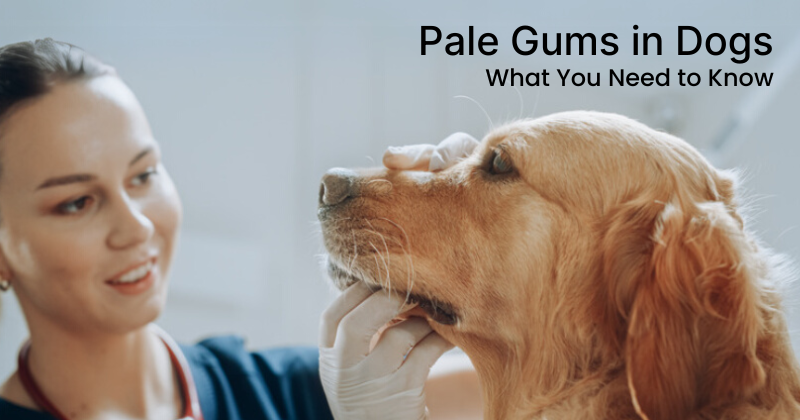
Your dog’s health is often reflected in subtle ways, and one of the most telling signs can be found in their gums. While you might not think to check them regularly, changes in gum color, such as paleness, can signal underlying health concerns that shouldn’t be overlooked. These changes can range from mild to serious, and recognizing them early can help you act promptly. If you’ve noticed that your dog’s gums look pale, Walnut Creek Veterinary Clinic in Papillion, NE, can help diagnose and treat your pet’s condition. Contact us at (402) 505-5445 today or request an appointment to ensure your dog receives the care they need.
A dog’s gums are an excellent indicator of overall health. Healthy gums typically appear pink and moist, showing that blood flow and oxygen levels are adequate. Pale gums, however, may point to issues such as anemia, poor circulation, or even shock. Pale gums occur when the normal flow of oxygen-rich blood is disrupted. This discoloration can be linked to a variety of causes, ranging from minor conditions to severe emergencies. Paying attention to this subtle change is important, as it may be the first visible sign that your dog is unwell.
If you notice pale gums in your dog, it’s critical to observe other symptoms they might display. Weakness, rapid breathing, or lethargy combined with pale gums are often signs of a more serious condition. Contact Walnut Creek Veterinary Clinic at (402) 505-5445 for an evaluation if your dog’s gum color changes suddenly or dramatically.
Several factors can lead to pale gums in dogs. While some may be minor, others require urgent veterinary care. Below are some common causes to consider.
Anemia occurs when a dog’s body has an inadequate number of red blood cells or hemoglobin, which is responsible for carrying oxygen. This condition can result from blood loss, internal bleeding, or diseases that destroy red blood cells, such as immune-mediated hemolytic anemia.
Signs of anemia include lethargy, weakness, and in severe cases, collapse. Treatment often involves addressing the underlying cause, which may include managing infections, parasites, or chronic diseases.
Shock, often caused by trauma or a sudden drop in blood volume, can also lead to pale gums. In these cases, the body prioritizes blood flow to vital organs, reducing circulation to less critical areas like the gums. Shock is a medical emergency that requires immediate intervention. Symptoms often include rapid breathing, an elevated heart rate, and confusion or disorientation.
Severe infestations of parasites, such as fleas, ticks, or intestinal worms, can lead to anemia and pale gums, particularly in younger or smaller dogs. These parasites feed on a dog’s blood, reducing red blood cell counts and impacting overall health. Prevention is key when it comes to parasites. Regular preventive treatments and routine checkups can help protect your dog from these health risks.
While pale gums in dogs might not always indicate a life-threatening issue, they should never be ignored. Determining the severity of the situation involves assessing other symptoms, your dog’s behavior, and how quickly the condition appeared.
To check your dog’s gums, gently lift their lip and observe the color. Press lightly on the gum with your fingertip. The gum should blanch and quickly return to its pink color within two seconds. This is called the capillary refill time and is an important indicator of your dog’s circulation. If the gums remain pale or white after this test, it’s time to consult your veterinarian. Call Walnut Creek Veterinary Clinic at (402) 505-5445 to schedule an appointment or request emergency care if needed.
When you bring your dog to Walnut Creek Veterinary Clinic for pale gums, our team will perform a thorough physical examination and may recommend diagnostic tests to determine the underlying cause. These tests could include:
Once the cause is identified, your veterinarian will create a treatment plan tailored to your dog’s needs. Early intervention often leads to better outcomes, so seeking professional care as soon as possible is vital.
Proactive care is the best way to minimize the risk of pale gums in dogs. Routine veterinary checkups, parasite prevention, and monitoring your dog’s health can help catch potential problems early. Make sure your dog receives regular blood work during annual visits to check for underlying conditions that might not be immediately visible. If you suspect any changes in your dog’s gum color or overall health, it’s better to err on the side of caution and consult your veterinarian. At Walnut Creek Veterinary Clinic, we’re here to help. Call us at (402) 505-5445 or request an appointment today to discuss your concerns and keep your dog healthy and happy.


